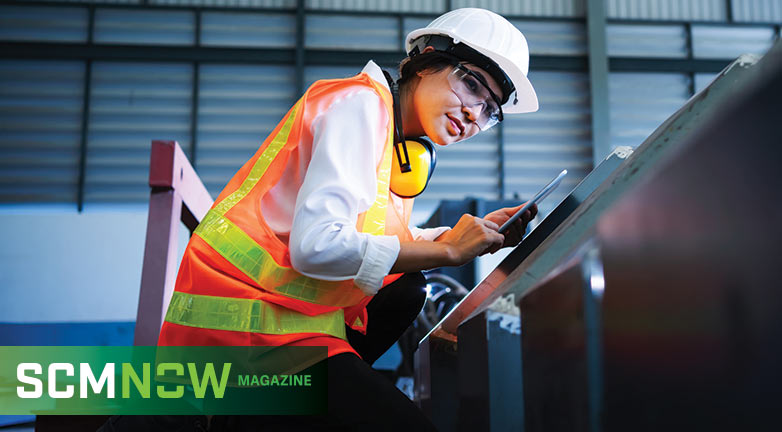From the smallest components to the biggest machines, all equipment is subjected to unpredictable field conditions, harsh operating environments and sometimes even abuse. These factors significantly increase the risk of wear and tear, corrosion, and damage. If equipment is not properly maintained, it may need to be scrapped. Worn components contribute to 73 million metric tons of ferrous metal and millions more tons of nonferrous metal and stainless steel scrap.
Remanufacturing worn, corroded or otherwise damaged parts is an important way to reduce equipment waste and the demand on natural resources required to manufacture replacements. According to the APICS Dictionary, remanufacturing is an industrial process in which worn-out products are restored to like-new condition. In contrast, a repaired product normally retains its identity, and only those parts that have failed or are badly worn are replaced or serviced. In short, remanufacturing gives parts a longer, more reliable lifespan.
Fortunately, remanufacturing is on the rise. The practice already is common in the automobile, heavy-equipment and off-highway vehicle (OHV) sectors and is expected to grow into the marine and aerospace industries as well as others. Examples of components that can be remanufactured include landing gear for aerospace vehicles; diesel engines in OHVs; as well as many types of pumps, valves and turbines. Remanufacturing also helps drive down the total cost of ownership of expensive equipment and, of course, has a positive impact on sustainability efforts.
However, there are other considerations with remanufacturing. First, it’s important to consider the environmental effects of the selected remanufacturing process. In addition, remanufacturing typically results in downtime for the equipment that is being restored — and that cost needs to be balanced with the benefits of remanufacturing, especially because the costs of downtime can quickly add up. In industries including marine and shipping, power generation, and mining, it is vital to use remanufacturing methods that quickly, cost-effectively and sustainably enhance components, improve wear resistance and repair damage.
An efficient solution
Selective plating — also known as brush plating — is a remanufacturing process that addresses these challenges. This is a method of repairing and restoring critical dimensions and the surface properties of worn components back to original equipment manufacturer standards by using an array of solutions, such as copper, nickel, nickel-tungsten and cobalt.
The process tends to have far less environmental impact compared with other surface-coating methods. Selective plating uses less solution and fewer chemicals; generates very little waste; and reduces the carbon costs of emissions, transportation and shipping. In addition, because the process reduces fumes and hazardous waste, it offers a safer and healthier working environment for those who do the brush plating.
This portable method of electroplating can be used to treat specific areas of a component with accurate, selective brush plating of materials onto localized surfaces and diameters, enabling in-situ repair and enhancement that typically is faster than alternative surface-coating methods. Because the work can be completed on-site, the process reduces the downtime and costs associated with disassembly, transport and reassembly. Selective plating also allows for more accurate control of deposit thicknesses, often enabling parts to be plated to size with no post-machining, which also reduces equipment downtime.
As opposed to tank plating – the other major method in electroplating –– selective plating does not require extensive masking or special fixtures. It also can plate deposits between 30 and 60 times faster with no risk of part distortion because the process takes place at room temperature. All of this combines to make this particular remanufacturing process a faster, more cost-effective and lower-risk option.
The science of selective plating
It’s the science behind selective plating that makes it so effective. Given the continuous use and sometimes harsh direct impact experienced when equipment and machinery is in operation, selective plating needs to bond at the atomic level. This is something not provided by traditional surface-coating methods, such as thermal spray, which only forms a mechanical bond.
To create this atomic bond, selective plating uses electrochemical principles: An electrolyte solution containing ions of the deposit material is introduced between the negatively charged plating surface and the positively charged tool. The tool is powered by a portable power pack, which enables precision control over amperage, voltage and duration.
When the tool — or anode — touches the surface, a circuit is created, with a cover material around the tool providing a reservoir to ensure even distribution. The current within the circuit causes the ions between the interfaces to bond, building up the plating layer and delivering a highly adherent and dense metal deposit.
Selective plating in practice
Selective plating has proven to be especially useful in remanufacturing components for heavy equipment. Because of their size, cost and lead time, replacement parts for heavy equipment typically are not available on short notice, so remanufacturing is the best approach to keep the equipment running.
A common scenario is damage to hydraulic rods and rams, which ranges from light scratches to deep impacts and corrosion damage. These can be permanently repaired with selective plating. Defects typically are repaired with one or more layers of copper and then covered with a wear-resistant deposit with good release or wetting characteristics. For rods and rams that are made of carbon or stainless steel and that have been plated with chrome or nickel, copper is applied to the damaged area and then dressed back to just below the surface. Finally, a thin layer of cobalt-nickel is applied to a slightly larger area and then polished to match the surface texture.
For a fast-moving quarter of the world’s industrial landscape, remanufacturing and selective plating present a distinct way to do things better. The process offers wear resistance, surface hardness and corrosion protection, as well as a host of other efficiency and environmental benefits. Ultimately, selective plating returns vehicles, machines and equipment to operational effectiveness for a longer life of efficient and reliable service, with minimal downtime in the process.



